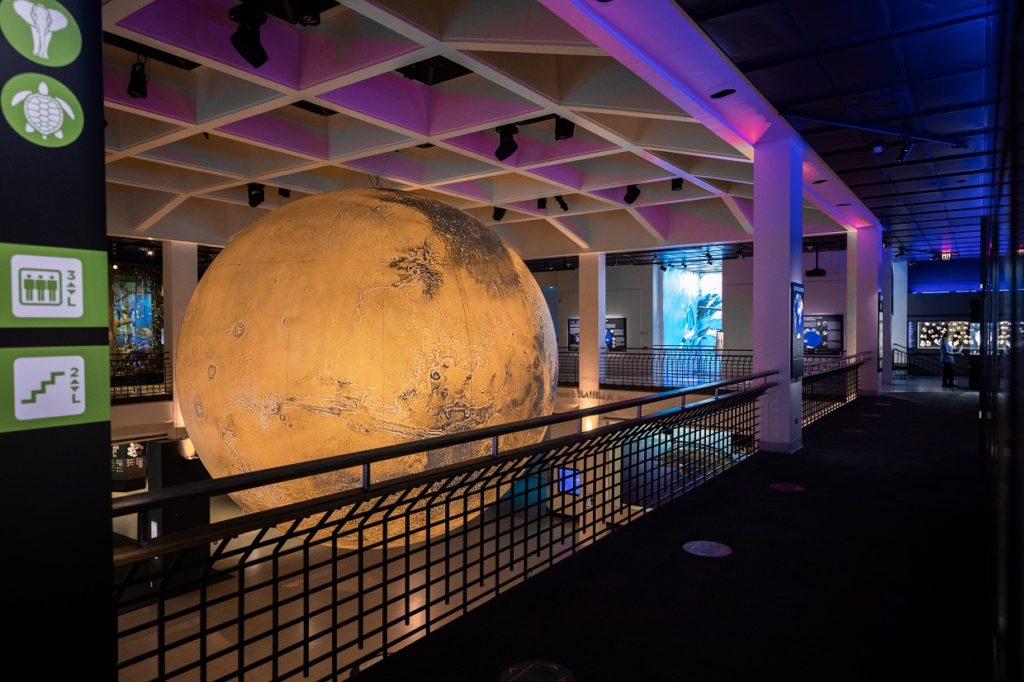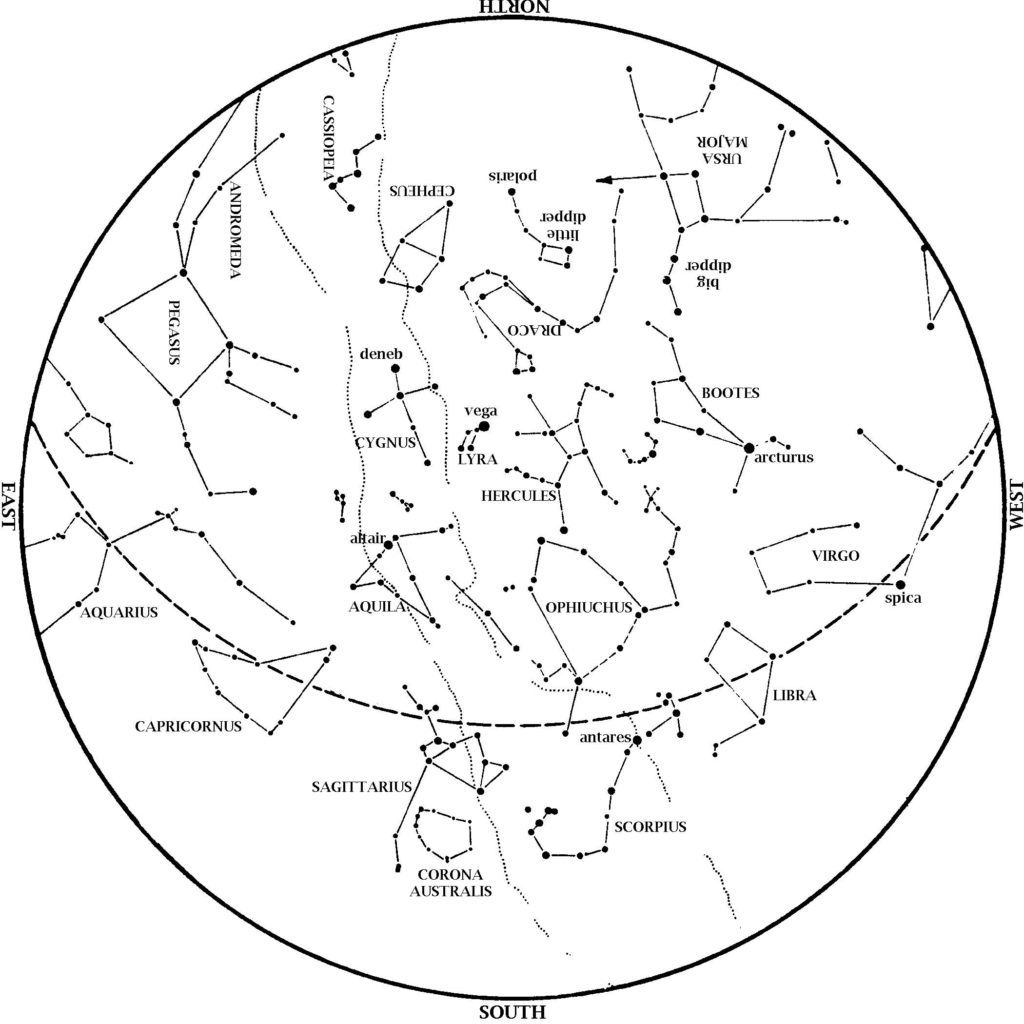Jupiter and Saturn are in the southeast at dusk this month. Look southeast in the early evening for the two planets which will be about 6 degrees apart.
Mars is higher and brighter in the morning sky each day this month. Look high in the south at dawn. Mars now outshines all the stars visible at night from Houston this time of year.

Venus is now visible in the east northeast at dawn. It remains a ‘morning star’ for the rest of 2020.
The Big Dipper is above and to the left of the North Star, with its handle pointing up. From that handle, you can ‘arc to Arcturus’, which is the brightest star visible on August evenings.
The Summer Triangle is high in the east at dusk. This consists of Deneb, Vega, and Altair, the brightest stars in Cygnus, Lyra, and Aquila respectively. Scorpius, the Scorpion, is in the south, with the ‘teapot’ of Sagittarius to his left. From the Big Dipper’s handle, ‘arc to Arcturus’ and ‘speed on to Spica’ in the southwest. The ‘teapot’ of Sagittarius to the left of Scorpius, with Saturn to the upper left of the ‘teapot’. When you face between these two constellations, you face the direction of the galactic center, which all stars in the Milky Way orbit. The Great Square of Pegasus rises in the east, heralding the coming autumn.
If you are far enough from bright city lights, you might look for the Milky Way band. This band is brightest near the galactic center and extends from there right through the Summer Triangle. In fact, every star we ever see in the sky with the naked eye is in our Milky Way. Indeed, our galaxy is so big that only stars relatively close to us appear as distinct stars; the rest of our galaxy blurs out and appears as the Milky Way band across our sky. For example, Deneb is about 1600 light years away, which is quite far. The entire Milky Way, however, is 100,000 light years across, making Deneb one of our relative ‘neighbors’. Thus, we see our Milky Way as a blur in the background with stars like Deneb (and Vega, Altair, Arcturus, Spica, etc.) in the foreground.

Moon Phases in August 2020:
Full August 3, 10:59 a.m.
Last Quarter August 11, 11:45 a.m.
New August 18, 9:41 p.m.
1st Quarter August 25, 12:58 a.m.
The George Observatory remains closed, but you can get a closer look at Mars with the newest installation at HMNS Hermann Park Mars by Luke Jerram.

